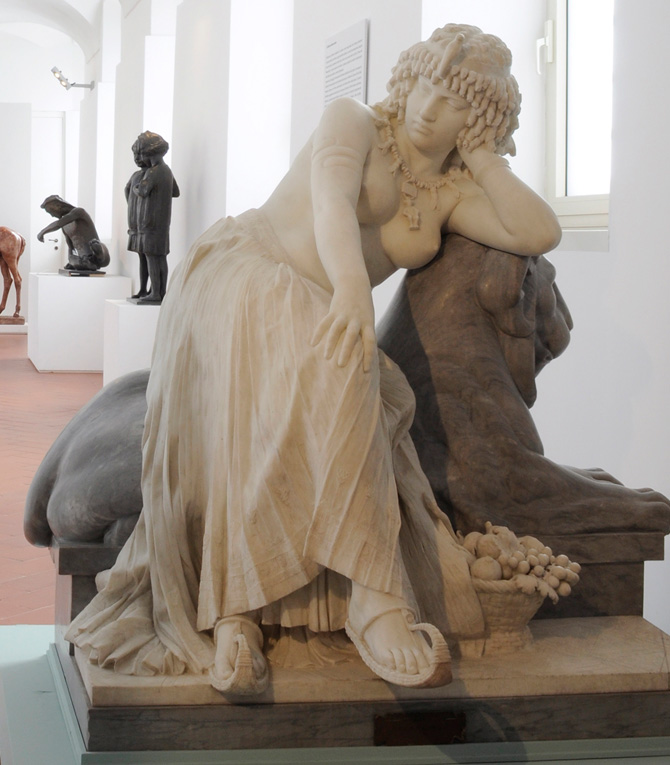Bronze warrior (probably a Saka) from Xinyuan 5th-3rd C. BCE
"This warrior sports distinctive headgear that resembles a type fashionable in ancient Greece and Rome. The figure was recovered in the far northwest of China at a site linked to nomadic peoples, perhaps the Scythians, who dwelled in that region from the fifth to third century B.C. Although crudely cast, the figure’s well-modeled shoulders, arms, and collarbones reveal an awareness of human anatomy—a characteristic of the Hellenistic sculpture that Alexander the Great introduced into Central Asia in the fourth century B.C. Nomadic peoples helped transmit this influence to their Chinese neighbors.
42cm high, 4 kilograms. Documented in "Cambridge Ancient History" IV. Also in Boardman "The diffusion of Classical Art in Antiquity", with photograph: "A bronze figurine of a kneeling warrior, not Greek work, but wearing a version of the Greek Phrygian helmet. From a burial, said to be of the 4th century BC, just north of the Tien Shan range". Urumqi, Xinjiang Region Museum"
-taken from MetMuseum and wikipedia
 |
| Bronze warrior (probably a Saka) from Xinyuan 5th-3rd C. BCE. Tuanchang, Burial Site. |
 |
| From MET. |
 |
| From MET. |
 |
| From MET. |
 |
| From Liêm Phó Nhòm's flickr aka toubib46. |
Source:
https://www.metmuseum.org/art/collection/search/640849
https://commons.wikimedia.org/wiki/File:Bronze_Warrior_Statue_without_shade.jpg
https://www.jstor.org/stable/43486521?read-now=1&seq=5#page_scan_tab_contents
https://erenow.net/ancient/the-greeks-in-asia/6.php
https://www.flickr.com/photos/toubib46/5182526338/
SilkRoadFoundation © Cultural Heritage Bureau of the Xinjiang Uighur Autonomous Region, China





Comments
Post a Comment